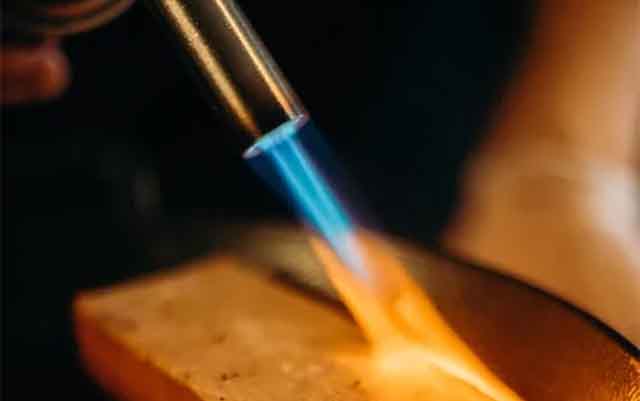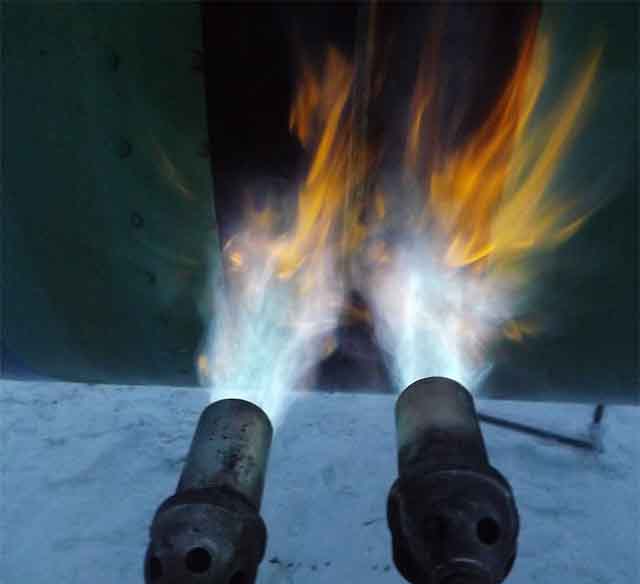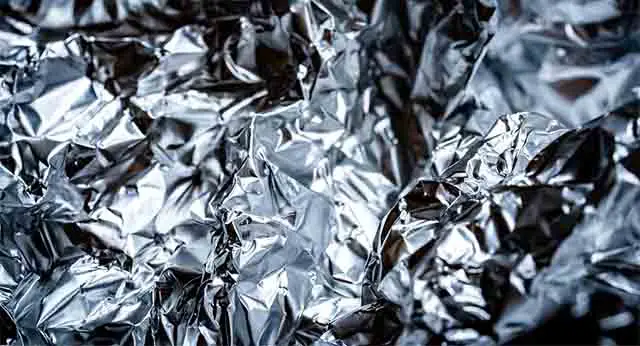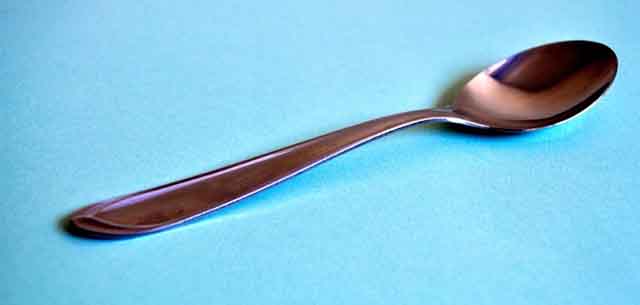If you’re preparing a crème Brulé, you may ask what to use if you don’t have a kitchen torch. Can I use a lighter instead of a kitchen torch?
Yes, you can use a lighter instead of a kitchen torch, but the results may not be as good. Although a lighter can work, it’s not the best alternative to a kitchen torch. This is because it burns inefficiently and will leave a funny, unpleasant taste in food.
A lighter is sufficient in lighting small fires, but not big tasks. However, it can be an alternative to a kitchen torch if you’re making a small dish. As for a larger dish, a lighter’s heat is insufficient because it produces a small flame as compared to a kitchen torch, meaning it will take longer.

Do I need a kitchen torch?
A cooking torch, butane or propane in your kitchen is a crucial addition for a great home cook. Hence, if you’re familiar with making exotic dishes like crème Brulé, mac and cheese, or a tuna melt, you understand why a kitchen torch is necessary.
Butane vs. propane torch for cooking
Chefs know the need for a cooking torch, whether butane or propane. The primary difference between the two is size. The latter is better to use when more heat is needed in a fast manner, but two hands are required to operate it. One hand holds the torch head while you place the other on the gas cylinder.
On the other hand, a butane torch is light and only requires a single hand to operate. If you’re worried about their safety on food and asking, is butane torch safe for food? Worry no more, as both gases are eco-friendly, non-toxic, and they burn clean. Hence, the gases have no long-term negative impacts on the environment and are safe if you exercise caution when handling them.

Can I use regular torch instead of kitchen torch?
Yes, using a regular torch instead of a kitchen torch is safe. Torched cooking has been around for decades and is the best technique for toppings.
A kitchen torch allows you to be in control of preparing a dish as you want it. This is because you can control the flame and the distance to the meal. Regular torch options have the same food-grade fuel as FDA recommends for food code.
An electric kitchen torch has multiple functions and is an excellent alternative to butane or propane options. However, if your Coleman propane torch won’t light, an electric stove with a broil function can come in handy.

- Open the oven, place the metal rack on the top slot and turn on the broiler until it’s red-hot.
- Now place your food under the rack until the crust turns golden, and the results will be better than if you used a torch.
What is the difference between a kitchen torch and a regular torch?
There’s no significant difference between a kitchen torch and a regular torch. However, when you buy the standard torch, select a flame that doesn’t fluctuate when tilted. These issues are familiar with the cheap options because the gas isn’t always the same.
You may want to buy other gas options besides propane. This is because the gas is cheaper but doesn’t get too hot. Hence, completing a simple task will take you longer. Mini-torches are ideal for caterers doing small parties for convenience, since they don’t want a large cylinder that will take up too much space.

What can you use instead of a kitchen torch?
You need a kitchen torch to make the delicious crust on most dessert toppings like crème Brulé. But how do you make the prominent top crust if you don’t have a kitchen torch?
It can be a challenge to caramelize the topping without a torch. However, there are other helpful alternatives to manage the situation. Here are the best options to get the same results.
Propane Torch or Butane Torch

Don’t stop making your dessert just because you don’t have a kitchen torch. You can use a propane or butane torch to finish the job. A propane torch is fitted with brass tubes, a knob to control the flame, which are all connected to a propane-filled tank.
However, handling the tank is challenging and risky, meaning you must be extra careful when using it to avoid accidents. The other alternative is a butane torch, which is small and handy. A butane torch has a built-in ignitor, making it easy to use when caramelizing the topping of your dessert.
Aluminum Foil
Cut the aluminum foil paper to the exact size of your topping and spray non-sticking cooking oil on one side. Put some sugar on the side with oil, place the foil on cooking paper and let it broil for a few seconds. And check to ensure it doesn’t burn, and put it back until the caramel is ready and remove it. Now transfer the caramel to the dessert.

The Stove
Mix small portions of sugar, honey, and water in a saucepan, then place it on the stove. Put on medium heat and stir until the mix turns smooth and golden. When the crust is ready, pour it on the dessert correctly to get the same results as a kitchen torch.
Some stoves have the broiler function, which you can use to caramelize the dessert topping. Place the metallic rack on the top rack, turn on the medium heat and wait until it turns red-hot. Now place the cup or bowl with your Brulé under the hot rack. Wait until the crust turns golden, then remove.

Spoon
Take a sizeable metallic spoon and heat it on the stove with a high flame. Wait until the spoon is red-hot, then immediately place it on the custard and watch the top caramelize. A spoon makes a perfect, delicate caramel crust on your dessert, fast and easy.

Candle or grill lighter
A candle or grill lighter can manage the situation. Although the results may not be as good as those from a kitchen torch, you can tackle the crisis successfully.
This method is only effective when making a small caramel topping. Put some sugar on the custard to use the lighter like a caramel torch. The process will take more time than when using a torch.
Frequently Asked Questions (FAQs)
What fuel is used in a kitchen torch?
The most common fuel used in kitchen torches is butane or propane gas. Both gases are safe to use in your kitchen and on food.
What makes a lighter a torch?
The needle-like flame produced by a torch lighter is hot and intense. The flame is hotter than those from regular lighters. Torch lighters have a consistent air-propelled fire from different angles.
How do you light a blowtorch without a lighter?
You can light a blowtorch without a lighter using a striker with propane torches. A striker is a gun-shaped gadget with a trigger that you pull to spark a flame that burns the blowtorch.
Final Verdict
You should have no confusion now whether you can use a lighter instead of a kitchen torch. Yes, you can use a lighter as an alternative if you don’t have a kitchen torch to make the caramel topping on your dessert and save the day.
Lighters have food-grade gas, meaning it’s safe to use in your dessert. Moreover, lighters produce a thin flame that burns effectively from different angles but may only be effective for small desserts.
Also read – Can You Use A Propane Torch With MAPP Gas?
